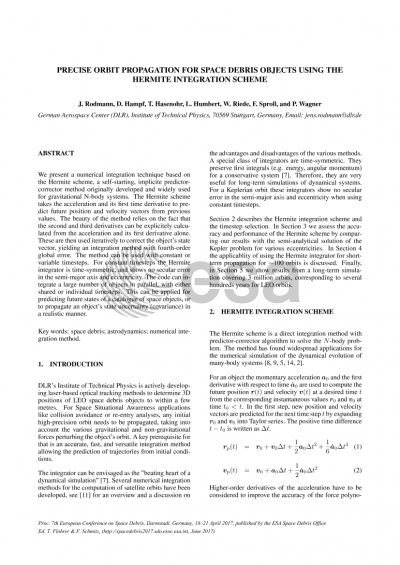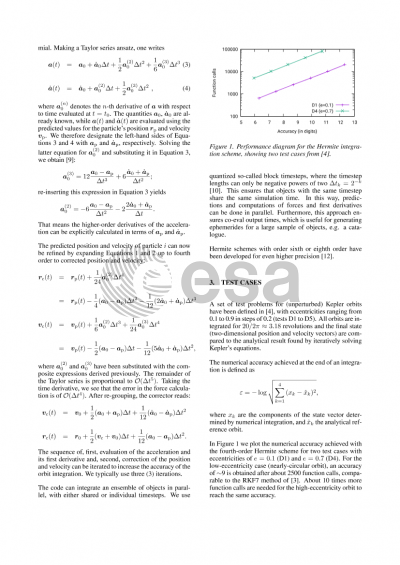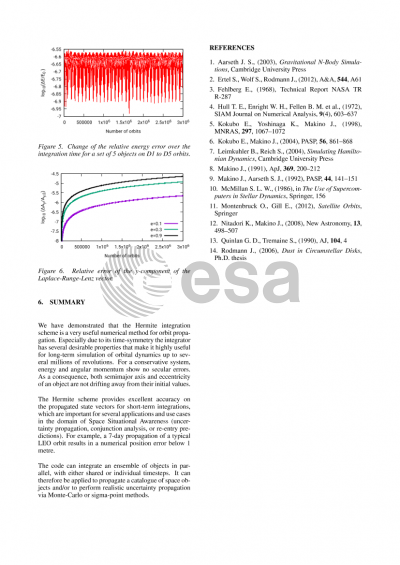Document details

Abstract
DLR's Institute of Technical Physics is actively developing laser-based optical tracking methods to determine 3D positions of LEO space debris objects to within a few metres. For Space Situational Awareness applications like collision avoidance or re-entry analyses, any initial high-precision orbit needs to be propagated, taking into account the various gravitational and non-gravitational forces perturbing the object's orbit. A key prerequisite for that is an accurate, fast, and versatile integration method allowing the prediction of trajectories from initial conditions.
We will introduce a numerical integration technique based on the Hermite scheme, a self-starting, implicite predictor-corrector method originally developed and widely used for gravitational N-body systems. The Hermite scheme takes the acceleration and its first time derivative (also known as jerk) to predict future position and velocity vectors from previous values. The gist and beauty of the method relies on the fact that the second and third derivatives (sometimes called snap and crackle, respectively) can be explicitely calculated from the acceleration and jerk alone. These are then used iteratively to correct the object's state vector, yielding an integration method with fourth-order global error. The method can be used with constant or variable timesteps. For constant timesteps the Hermite integrator is time-symmetric, and shows no secular error in the semi-major axis and eccentricity.
The code can integrate a large number of objects in parallel, with either shared or individual timesteps. This can be applied for predicting future states of a catalogue of space objects, or to propagate an object's state uncertainty (covariance) in a realistic manner. We will show first results from our orbit propagator development. The implementation of various physical models describing the gravitational and non-gravitational perturbations will be discussed.
Preview





